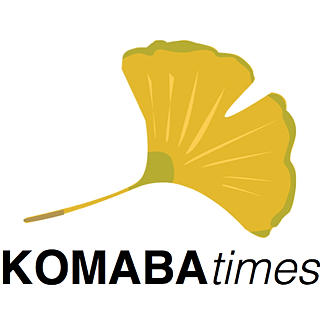Little Children in Komaba - from the Day Nursery
- Komaba Times
- Jul 29, 2016
- 3 min read
Updated: Oct 10, 2019
By NAOKI MIZUTANI

The building of Todai-Komabachiku-Hoikujo, taken by author.
Have you ever seen the little children patrolling the Komaba Campus in a cart or toddling led by the adults? Or, some people might have seen the wooden house unusual for university at the end of the campus around the gymnasium. This is the day nursery in Komaba Campus. I conducted an interview with Ms. Ikemi, the director of the nursery. Here is what students should know about the nursery in Komaba.
There are a number of day nurseries in UTokyo, however, the characteristic of “Todai-Komabachiku-Hoikujo” (an official name for the nursery meaning Nursery for the Todai Komaba District, hereinafter referred to as Komaba nursery) is that nursery child’s parents are composed of not only the staff or students of the university, but also people living near Komaba campus. The reason of this situation lies in the form of nursery. Komaba nursery is an unauthorized nursery.
An unauthorized nursery is not authorized by the government because the nursery is not satisfying the official requirements for establishing a nursery. However, it is often difficult for nurseries in Tokyo to satisfy the needs of dual-income families, which hope to leave their children in the convenient nursery for a long time. So, Tokyo Metropolitan Government made a nursery room system to support the unauthorized. Since 2001, the administration established the unique certification system and subsidize nurseries in Tokyo. When Komaba nursery made an application for the subsidy, the authority made it a condition that nursery should include children from both the university and local residents. For that reason, the structure of Komaba nursery became unique one.
Komaba nursery was established in 1971, and was maintained mainly by the Teacher’s Association of Utokyo, not by the university. From 2003 to present, an NPO corporation “Todai Komaba nursery meeting” have managed the nursery. Komaba nursery is one of the institution of Office for Gender Equality, The University of Tokyo, and borrows a small property from the university. Ms. Ikemi says nature of Musashino (the old name for Western Tokyo) is well preserved in Komaba Campus, so the Campus is the favorite walking course for children.
The nursing policy of Komaba nursery is simple and somehow primitive, unlike other nurseries and kindergartens which give children special education. Komaba nursery thinks it is important for children to play by all their might with water, sand, and mud, eat natural delicious food, and come into contact with nature. The nursery is comprised children from an infant to preschooler. At the age of 4 to 5, children in Komaba nursery climb Mt. Takao (599 meters above the sea), and children at preschool age experience harvest of rice in Sakae village in Nagano Prefecture. According to Ms. Ikemi, it is a good work off for restless children to play hard in nature.
About the advantage of nursery, Ms. Ikemi said as follows:
“Unlike the kindergarten, day nursery is comprised of children from babies to preschoolers, and the relation of older and younger children arise. The older children help the younger ones in the nursery. Babies learn from the old children and when they grow up, they help the juniors as their seniors do. On the other hand, the senior feel relaxed touching babies on the hands. Occasionally, quarrel among children happens, however, a relationship of deep trust arise as they spend time in the same nursery for a long time.”
For us, how we spend our early age is an important matter for the cultivation of our character. Precisely for the reason that Japan has fewer and fewer children, reconsidering what preschool education should be is a significant question.





Comments